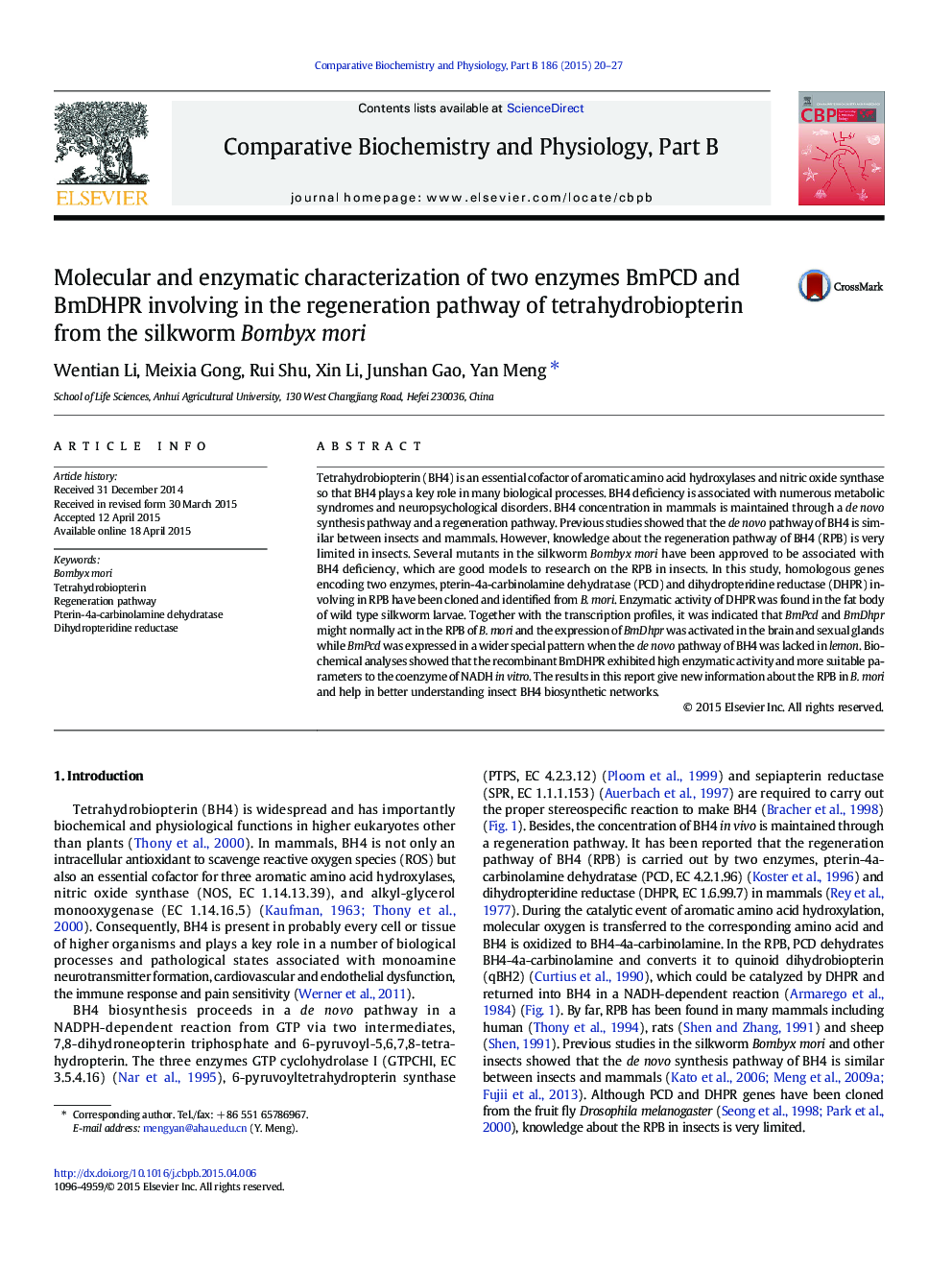| Article ID | Journal | Published Year | Pages | File Type |
|---|---|---|---|---|
| 1975154 | Comparative Biochemistry and Physiology Part B: Biochemistry and Molecular Biology | 2015 | 8 Pages |
Tetrahydrobiopterin (BH4) is an essential cofactor of aromatic amino acid hydroxylases and nitric oxide synthase so that BH4 plays a key role in many biological processes. BH4 deficiency is associated with numerous metabolic syndromes and neuropsychological disorders. BH4 concentration in mammals is maintained through a de novo synthesis pathway and a regeneration pathway. Previous studies showed that the de novo pathway of BH4 is similar between insects and mammals. However, knowledge about the regeneration pathway of BH4 (RPB) is very limited in insects. Several mutants in the silkworm Bombyx mori have been approved to be associated with BH4 deficiency, which are good models to research on the RPB in insects. In this study, homologous genes encoding two enzymes, pterin-4a-carbinolamine dehydratase (PCD) and dihydropteridine reductase (DHPR) involving in RPB have been cloned and identified from B. mori. Enzymatic activity of DHPR was found in the fat body of wild type silkworm larvae. Together with the transcription profiles, it was indicated that BmPcd and BmDhpr might normally act in the RPB of B. mori and the expression of BmDhpr was activated in the brain and sexual glands while BmPcd was expressed in a wider special pattern when the de novo pathway of BH4 was lacked in lemon. Biochemical analyses showed that the recombinant BmDHPR exhibited high enzymatic activity and more suitable parameters to the coenzyme of NADH in vitro. The results in this report give new information about the RPB in B. mori and help in better understanding insect BH4 biosynthetic networks.
